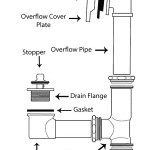Bathtubs For Tiny Spaces: Maximizing Comfort in Limited Bathrooms
The allure of a relaxing soak in a bathtub is undeniable. However, the reality of limited square footage in many homes, apartments, and condominiums often presents a significant challenge. The standard-sized bathtub can easily dominate a small bathroom, leaving little room for other essential fixtures and movement. Consequently, the need for bathtubs specifically designed for tiny spaces has grown, leading to a diverse range of innovative and space-saving options.
These specialized bathtubs prioritize functionality and comfort without compromising on aesthetics. They come in various shapes, sizes, and materials, allowing homeowners to choose a model that seamlessly integrates into their existing bathroom design while maximizing available space. The key is understanding the different types of compact bathtubs and their respective advantages and disadvantages to make an informed decision.
Understanding Space-Saving Bathtub Designs
Several design modifications enable bathtubs to fit comfortably in smaller bathrooms. These designs focus on reducing the overall footprint of the tub while maintaining adequate bathing depth and comfort.
Slipper Bathtubs: The slipper bathtub, characterized by its raised backrest on one end, offers a comfortable reclining position. While traditionally large, smaller versions of the slipper tub have been developed for compact bathrooms. These often feature a reduced length while preserving the ergonomic design of the backrest, making them ideal for relaxing soaks.
Corner Bathtubs: Corner bathtubs are designed to fit snugly into a corner of the bathroom, utilizing space that might otherwise be wasted. These tubs often have a triangular or quarter-circle shape, allowing them to maximize bathing space within a limited area. They are particularly well-suited for bathrooms with unconventional layouts.
Japanese Soaking Tubs (Ofuro): Inspired by traditional Japanese bathing practices, these tubs are typically shorter and deeper than standard bathtubs. They are designed for seated immersion, offering a full-body soak in a more compact form. Ofuro tubs are excellent for small bathrooms where length is a concern, as they prioritize depth over length. They often come with built-in seats or benches for added comfort.
Freestanding Compact Bathtubs: Freestanding bathtubs offer a stylish and modern look, but they can often be space-intensive. However, manufacturers have created compact versions of freestanding tubs specifically for smaller bathrooms. These tubs maintain the aesthetic appeal of a freestanding model while minimizing their overall dimensions. They offer flexibility in placement, allowing them to be positioned in various locations within the bathroom.
Walk-in Bathtubs (Compact): While traditionally associated with accessibility, compact walk-in bathtubs can also be a space-saving option for smaller bathrooms. These tubs feature a watertight door, allowing users to enter and exit the tub easily. Compact walk-in tubs often have a smaller footprint compared to standard walk-in models, making them suitable for bathrooms with limited space. The built-in seat and safety features can be beneficial for individuals with mobility issues.
Bathtub-Shower Combinations (Compact): Though not strictly a space-saving bathtub design in itself, incorporating a shower into a compact bathtub is a common and effective way to save space in a small bathroom. These combinations offer the functionality of both a bathtub and a shower in a single unit, eliminating the need for separate fixtures. They are available in various styles and sizes to suit different bathroom layouts.
Factors to Consider When Choosing a Bathtub for a Small Bathroom
Selecting the right bathtub for a small bathroom requires careful consideration of several factors. The dimensions of the bathroom, the user's bathing preferences, and the overall design aesthetic all play a crucial role in the decision-making process.
Bathroom Dimensions: The first step is to accurately measure the available space in the bathroom. This includes the length, width, and height of the area where the bathtub will be installed. It is also important to consider the placement of existing fixtures, such as toilets, sinks, and showers, and ensure that the new bathtub will not obstruct access to these fixtures. A detailed floor plan can be helpful in visualizing the placement of the bathtub and identifying potential challenges.
Bathing Preferences: The user's bathing preferences should be a primary consideration. Individuals who enjoy long, luxurious soaks may prefer a deeper bathtub, such as a Japanese soaking tub or a compact slipper tub. Those who primarily use the bathtub for quick showers may opt for a bathtub-shower combination with a comfortable standing area. Consider how frequently the bathtub will be used and the types of bathing experiences desired.
Material and Construction: The material of the bathtub affects its durability, heat retention, and aesthetic appeal. Common bathtub materials include acrylic, cast iron, steel, and fiberglass. Acrylic bathtubs are lightweight, durable, and offer excellent heat retention. Cast iron bathtubs are known for their superior heat retention and durability but are heavier and more expensive. Steel bathtubs are durable and relatively inexpensive but may not retain heat as well as acrylic or cast iron. Fiberglass bathtubs are the least expensive option but are also the least durable.
Plumbing Considerations: The location of existing plumbing lines is a critical factor in determining the placement of the new bathtub. Moving plumbing lines can be a costly and time-consuming process, so it is often preferable to choose a bathtub that can be installed with minimal plumbing modifications. Consider the location of the drain, water supply lines, and overflow drain when selecting a bathtub model.
Accessibility: If the bathroom is used by individuals with mobility issues, accessibility should be a key consideration. Walk-in bathtubs offer easy entry and exit, while bathtubs with grab bars can provide added support. Ensure that the bathtub meets the needs of all users in the household.
Style and Aesthetics: The bathtub should complement the overall style and aesthetics of the bathroom. Consider the color, shape, and finish of the bathtub and how it will integrate with the existing décor. Freestanding bathtubs offer a modern and elegant look, while corner bathtubs can be a more practical choice for maximizing space. Choose a bathtub that reflects the user's personal style and preferences.
Maximizing Space and Functionality with Smart Design Choices
Beyond selecting the right type of bathtub, several design choices can further maximize space and functionality in a small bathroom.
Wall-Mounted Fixtures: Opting for wall-mounted sinks and toilets can free up valuable floor space, creating a more open and spacious feel. These fixtures also make it easier to clean the bathroom floor.
Corner Storage: Utilizing corner spaces for storage can help to declutter the bathroom and keep essential items within easy reach. Corner shelves, cabinets, and shower caddies can maximize storage potential without occupying excessive floor space.
Vertical Storage: Take advantage of vertical space by installing tall, narrow cabinets or shelves. This can provide ample storage for towels, toiletries, and other bathroom essentials without encroaching on the limited floor space.
Sliding Doors: Replacing a traditional swinging door with a sliding door can save a significant amount of space, particularly in a small bathroom. Sliding doors eliminate the need for a door swing arc, allowing for more efficient use of the available space.
Mirrors: Large mirrors can create the illusion of more space and reflect light, making the bathroom feel brighter and more open. Consider installing a large mirror above the sink or along an entire wall to maximize the effect.
Lighting: Proper lighting is essential for creating a comfortable and functional bathroom. Use a combination of ambient, task, and accent lighting to illuminate the space and highlight key features. Dimmable lights can provide flexibility in adjusting the lighting to suit different moods and activities.
Color Palette: Lighter colors tend to make a space feel larger and more open, while darker colors can make it feel smaller and more enclosed. Opt for a light and airy color palette for the walls, floors, and fixtures to maximize the sense of spaciousness in a small bathroom. Accents of color can be added through accessories and artwork.
Multifunctional Furniture: Choose furniture pieces that serve multiple purposes. For example, a storage ottoman can provide seating and storage in one, while a vanity with built-in shelves can offer ample storage space for toiletries and personal care items.
By carefully considering the available space, bathing preferences, and design choices, it is possible to create a functional and comfortable bathroom, even in the most compact of spaces. The key is to be creative, prioritize functionality, and select fixtures and accessories that maximize the use of every inch of space.

60 Inches Or Less Bathtubs 11 Small For Bathrooms

17 Useful Ideas For Small Bathrooms Bathroom Design Decor

Small Bathrooms With Bathtub Tips And Tricks To Give Your Bathroom A Perfect Look Acqua Viva

Small Bathtub Ideas And Options Pictures Tips From

Small Bathtub Ideas And Options Pictures Tips From

Small Bathroom Bathtub Ideas Luna Spas
Small Bathtub 10 Best S For A Tiny Bathroom Architecture Design

Mini Bathtubs To Make You Fall In Love Inspiration And Ideas From Maison Valentina

12 Bathtubs For Small Spaces 2024 Badeloft
.jpg?strip=all)
ᐈ Soaking Tubs For Small Bathrooms Deep Bathtubs
Related Posts








